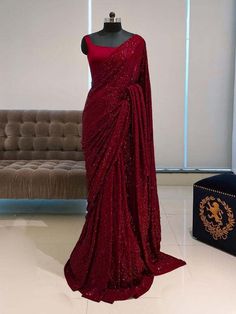Saree Design
The saree is a quintessential garment in Indian fashion, celebrated for its elegance, versatility, and cultural significance. This class note explores saree design in fashion design, covering its historical roots, types of sarees, draping styles, embellishments, contemporary adaptations, and practical insights for designers interested in creating and innovating within this iconic garment.
Historical and Cultural Significance

The saree has a rich history dating back thousands of years, evolving through various cultural and regional influences:
- Ancient Origins: Originating from the Indian subcontinent, the saree finds mention in ancient texts and sculptures dating back to the Indus Valley Civilization.
- Symbol of Tradition: Throughout history, the saree has been a symbol of grace, femininity, and cultural identity, worn in diverse regional styles across India and neighboring countries.
- Evolution: Over centuries, the saree has evolved in terms of fabric choices, draping styles, and embellishments, reflecting changes in fashion trends and societal norms.
Types of Sarees
India boasts a rich diversity of sarees, each with its unique weaving techniques, designs, and cultural significance:
- Banarasi Saree: Known for its opulent silk fabric and intricate brocade work, traditionally worn by brides and for special occasions in Northern India.
- Kanjeevaram Saree: Crafted from heavy silk with contrasting borders and motifs inspired by temple art, originating from Tamil Nadu.
- Bandhani Saree: Tie-and-dye technique originating from Gujarat and Rajasthan, characterized by vibrant colors and intricate patterns.
- Chikankari Saree: Lucknow’s specialty, featuring delicate white-on-white embroidery on fine muslin or cotton fabric, known for its ethereal beauty.
- Paithani Saree: Handwoven silk saree from Maharashtra, featuring peacock motifs and intricate pallu designs.

Draping Styles
The art of saree draping varies across regions in India, each style offering distinct aesthetic appeal and cultural significance:
- Nivi Style: Originating from Andhra Pradesh, the Nivi style involves pleating the saree at the waist and draping it over the shoulder with a pallu.
- Gujarati Style: Involves pleating the saree in the front, and then draping it over the right shoulder, with elaborate pallu designs.
- Bengali Style: Draped without pleats, with the pallu wrapped around the body and over the left shoulder, often adorned with traditional jewelry.
- Maharashtrian Style: Draped similar to the Nivi style but with the pallu tucked from the back to the front, showcasing the saree’s border.
- Tamilian Style: Involves draping the saree without pleats, and the pallu is draped over the left shoulder, showcasing the intricacies of the Kanjeevaram saree.
Embellishments and Design Elements
Saree design incorporates a variety of embellishments and design elements, enhancing its beauty and appeal:
- Embroidery: Intricate thread work, including zardozi, kantha, chikankari, and mirror work, adding texture and richness to the fabric.
- Hand Painting: Artistic motifs and designs painted on sarees, showcasing traditional art forms such as Madhubani, Kalamkari, and Warli.
- Zari and Brocade: Gold or silver metallic threads woven into the fabric, creating shimmering patterns and borders, typical in Banarasi and Kanjeevaram sarees.
- Prints and Patterns: Floral, geometric, and abstract prints, often created through block printing, digital printing, or screen printing techniques.
Contemporary Adaptations and Trends

Saree design continues to evolve with contemporary fashion trends and global influences:
- Fusion Sarees: Incorporating modern silhouettes, draping styles, and fabrics like chiffon, georgette, and crepe for a lighter and more fluid drape.
- Designer Sarees: Collections by fashion designers featuring innovative cuts, unconventional fabrics, and experimental embellishments for a modern twist.
- Sustainable Sarees: Embracing eco-friendly fabrics, natural dyes, and traditional handloom techniques to promote sustainability in fashion.
- Ready-to-Wear Sarees: Pre-stitched sarees with attached pleats and pallu, making it easier for women to drape quickly without assistance.
Practical Insights for Designers
- Fabric Selection: Choose fabrics that complement the saree style and draping technique, considering drape, texture, and comfort.
- Embellishment Placement: Strategically place embellishments to enhance the saree’s design, ensuring balance and visual harmony.
- Understanding Body Types: Design sarees that flatter different body types, considering proportions, pleating styles, and pallu lengths.
- Cultural Sensitivity: Respect regional traditions and cultural meanings associated with saree draping styles and design elements.
Conclusion

The saree stands as an enduring symbol of India’s cultural heritage and artistic craftsmanship, cherished for its timeless elegance and versatility. As fashion designers explore and innovate within saree design, they uphold traditions while embracing contemporary influences, creating sarees that resonate with modern women worldwide. By mastering the nuances of saree draping, fabric selection, and embellishment techniques, designers can celebrate the saree’s legacy while shaping its future in the dynamic world of fashion design.
